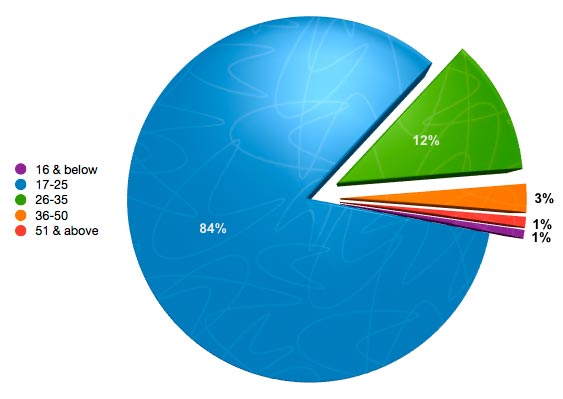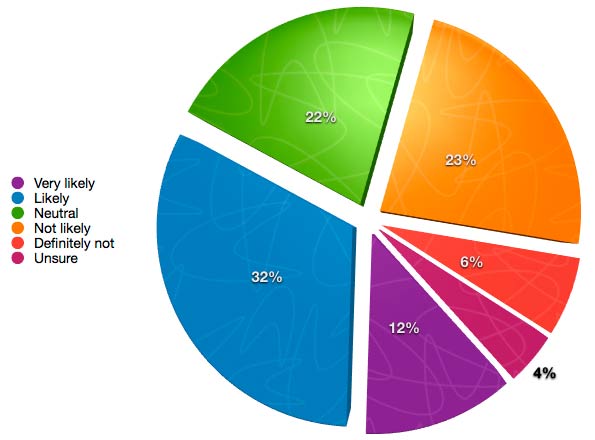Team:NTU-Singapore/HPA/Survey
From 2009.igem.org
Public Survey
The team decided early on that research alone was not enough! To determine how well DIYbio has been / will be received, we felt that a survey would be one great way to find out. We set about creating two surveys, one for the general public, and one for the DIYbio community.
The aim of the public survey was to determine the general reaction to citizen experimentation, and after a brief introduction to DIYbio, their first impressions about the potential and dangers of DIYbio. By finding out, we were confident we could determine the probable overall attitude towards to DIYbio.
The aim of the second survey, targeted specifically at the DIYbio community, was to determine the motivations of DIYbiologists, the things they perceive as barriers to entry, the limitations and their priorities when conducting experiments. With these data, we intended to collate the commitment and responsibility level of DIYbiologists to their hobby, and their immediate society.
However, as of 15 Oct, our second survey has not had more than at least 50 respondents, so we feel it would be too unnecessary to analyze such inconclusive numbers.
Public Survey Results & Analysis
As of 15th Oct, we had 516 respondents for our public survey, and we have analyzed (and cross-analyzed) the data. The following are the statistics and our interpretations.
Question 1
1. What is your email?
Rationale : We asked this so that we could filter out repeated entries or contact our survey respondents if some of their answers for open-ended questions were ambiguous.
Question 2
2. Which age group do you belong to?
Due to the survey being conducted online, even after viral advertising of the survey visa email, Facebook etc, we were only able to capture a majority within the same age-group as us. This is the reason for the large excess of 17-25 year olds who have completed this survey.
However, we believe this may be a feature, not a bug! DIYBio is a recent phenomenon, and the people who are likely to have the most to gain or lose by engaging in it are those within the 17-25 age group. So this particular set of results may give us an insight into the attitude of the most relevant population towards DIYBio.
Question 3
3. Which country do your currently reside in?
Respondents were given a list of all the countries of the world.
China - 29
France - 1
Germany - 1
India - 2
Indonesia - 3
Jordan - 1
South Korea - 1
Malaysia - 38
Maldives - 1
Netherlands - 5
Russia - 1
Singapore - 390
United States - 26
Vietnam - 1
Spain - 11
United Kingdom - 5
From this data, we hope to correlate interest level of DIYBio with the relative technological prowess of the host country. The majority of our responses came from Singapore (390), Malaysia (38), China (29) and US (26) out of a total of 516 responses. A visual representation seems unnecessary.
As much as we would have preferred to a more globally diverse response pool, these results were expected, and we have to concede that any conclusions would apply most to Singapore, and less to the world.
Questions 4 & 5
Question 6
Question 7
Question 8
Question 9
Question 10
Question 11
Question 12
Question 13
Question 14
Question 15
Question 16
Question 17
Question 18
Question 19
Question 20
20. If money were not an issue, how likely are you to take up DIYBio as a hobby?
This data is the most surprising. We had trouble making sense of this: a large proportion (44%) have expressed interest in picking up DIYbio and a slightly smaller percentage of the respondents (29%) are against ever pursuing it. The remaining 26% can be said to be neutral on this matter, which indicates they are still willing to consider DIYbio if factors other than money are also favourable. So, a grand total of 70% of the respondents are ultimately open, if not enthusiastic about DIYbio.
On its own, this data is encouraging because DIYbio as a community can only grow sustainably if the majority of the society around DIYbiologists are also open to pursuing DIYbio. This extra manpower, and exponentially larger mind-power could in turn bring about some of the positive benefits of DIYbio.
However this data is totally out of character considering the majority of the same population had just previously had expressed concern about the safety aspects, potential for misuse and accident rates of DIYbio. So, we are unable to conclude at this juncture whether our sample population ultimately votes in favour of or against DIYbio.
Recommendations
It is seen that the vast majority have not heard of DIYBio. Since it is common that people will instinctively fear what they don’t know, DIYBiologists must take great efforts to publicise the work and practice of their chosen hobby. The internet seems to be the medium of choice for DIYBio information, so biohackers should capitalise on this and get the good word out about DIYBio.
At the very least, the public should be aware of the extent, scope and intent of DIYBiologists so that they will not misunderstand any aspect of DIYBio. Also with a more public face given to DIYBio, members of the public will have less doubts about the potential of DIYBio, and DIYBio-ers will feel an increased sense of responsibility towards practising their hobby safely without harming the community.
Throughout the course of the survey analysis, we tackle the issue of safety and security, be it the risk of accidents or the potential for misuse.
DIYBio will do well to make a standard of regulations for itself, perhaps a checklist for all hobbyists to rate themselves as an internal community quality check. For example, a checklist can include an inventory list, datasheets and minimum safety protocol to be satisified before working with a particular bacterial sample.
Such a system will not only increase the quality and competence of DIYbiologists, but also the confidence level the public has on DIYbio as a whole.
With regards to contamination issues, again DIYbiologists must abide by a strict code of personal ethics so as to take evry precaution and every measure to avoid such incidents. For example, carelessly disposing of transformed bacteria with antiobiotic resistance may increase the occurrence of wild strains with antibiotic resistance. Such scenarios cannot be allowed to happen. One solution is to have a DIYBio chapters register as organisations so that their activities will become more regulated, and their inventory and actions can be tracked and monitored.
This will definitely help to minimise possibility of misuse, and if there are such incidents, they can be tracked to finger out the perpetrators. In general the DIYBio community must make sure to share protocols especially those pertaining to safety and contamination, to reduce the risk of contamination of public resources.
Special Thanks
The team would like to thank all respondents for taking time out to do our survey! It is regrettable however, that we were unable to get a critical number of entries for the other survey we prepared specially for the DIYbio community. Having that data would have been interesting to analyze in relation to this survey.
 "
"

